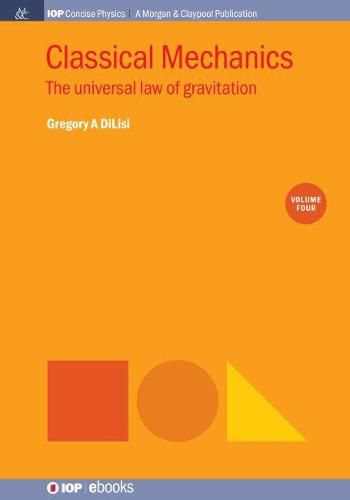Readings Newsletter
Become a Readings Member to make your shopping experience even easier.
Sign in or sign up for free!
You’re not far away from qualifying for FREE standard shipping within Australia
You’ve qualified for FREE standard shipping within Australia
The cart is loading…






This title is printed to order. This book may have been self-published. If so, we cannot guarantee the quality of the content. In the main most books will have gone through the editing process however some may not. We therefore suggest that you be aware of this before ordering this book. If in doubt check either the author or publisher’s details as we are unable to accept any returns unless they are faulty. Please contact us if you have any questions.
Classical Mechanics teaches readers how to solve physics problems; in other words, how to put math and physics together to obtain a numerical or algebraic result and then interpret these results physically.
These skills are important and will be needed in more advanced science and engineering courses. However, more important than developing problem-solving skills and physical-interpretation skills, the main purpose of this multi-volume series is to survey the basic concepts of classical mechanics and to provide the reader with a solid understanding of the foundational content knowledge of classical mechanics.
Classical Mechanics: The Universal Law of Gravitation focuses on the notion that forces act through their associated fields, which is first introduced when discussing Newton’s universal law of gravitation. A huge conceptual leap is required from the reader: an object can cause another object to move without even touching it. This is a difficult concept to reconcile with our everyday experiences but it makes perfect sense when we realize that is exactly how the Earth acts on us. Gravity is able to pull on us even though we are not in direct contact with the Earth. Also, the concept of super-position (and when it is applicable) is introduced. Super-position is crucial to the development of problem-solving skills so it will be illustrated in a number of example problems.
$9.00 standard shipping within Australia
FREE standard shipping within Australia for orders over $100.00
Express & International shipping calculated at checkout
This title is printed to order. This book may have been self-published. If so, we cannot guarantee the quality of the content. In the main most books will have gone through the editing process however some may not. We therefore suggest that you be aware of this before ordering this book. If in doubt check either the author or publisher’s details as we are unable to accept any returns unless they are faulty. Please contact us if you have any questions.
Classical Mechanics teaches readers how to solve physics problems; in other words, how to put math and physics together to obtain a numerical or algebraic result and then interpret these results physically.
These skills are important and will be needed in more advanced science and engineering courses. However, more important than developing problem-solving skills and physical-interpretation skills, the main purpose of this multi-volume series is to survey the basic concepts of classical mechanics and to provide the reader with a solid understanding of the foundational content knowledge of classical mechanics.
Classical Mechanics: The Universal Law of Gravitation focuses on the notion that forces act through their associated fields, which is first introduced when discussing Newton’s universal law of gravitation. A huge conceptual leap is required from the reader: an object can cause another object to move without even touching it. This is a difficult concept to reconcile with our everyday experiences but it makes perfect sense when we realize that is exactly how the Earth acts on us. Gravity is able to pull on us even though we are not in direct contact with the Earth. Also, the concept of super-position (and when it is applicable) is introduced. Super-position is crucial to the development of problem-solving skills so it will be illustrated in a number of example problems.